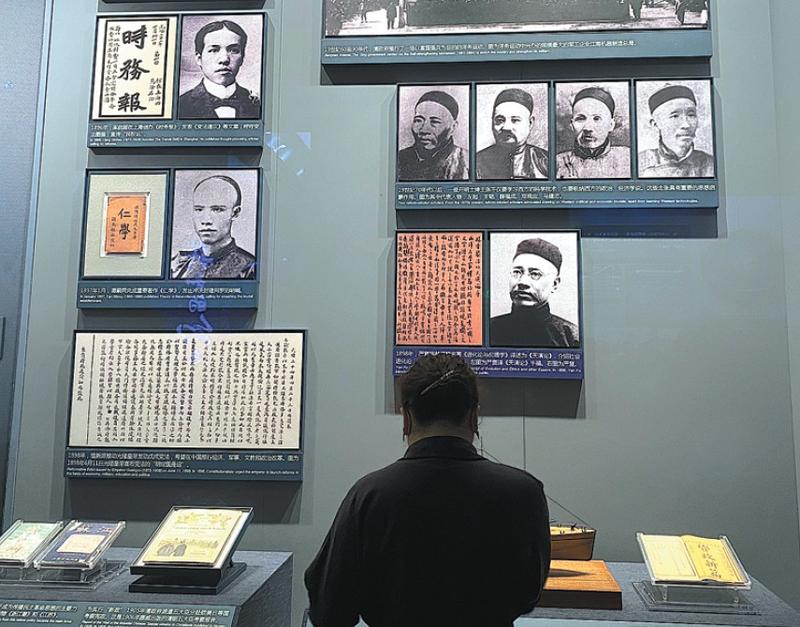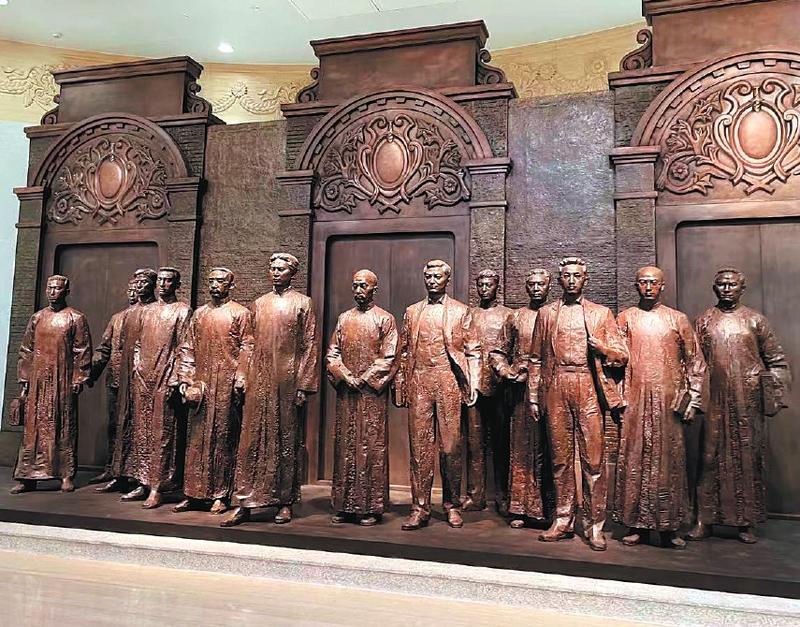 A visitor views exhibits at the Memorial of the Site of the First National Congress of the Communist Party of China in Shanghai. (HE QI / CHINA DAILY)
A visitor views exhibits at the Memorial of the Site of the First National Congress of the Communist Party of China in Shanghai. (HE QI / CHINA DAILY)
The new Memorial of the Site of the First National Congress of the Communist Party of China received more than 13,000 visitors per day since it opened to the public on June 3.
Located at the Xintiandi neighborhood in downtown Shanghai, the new hall is close to the original building where the first national congress of the CPC took place in 1921. The hall has an exhibition space of 3,700 square meters. Construction of the venue started in 2019. The venue comprises historical objects, photographs, scenic reproductions, video projections enhanced with augmented reality technology, and new artworks commissioned by the memorial hall that tell a vivid story about the founding of the CPC.
According to Hu Xiaoyun, head designer of the exhibition space, artists who were selected for the project were given detailed advice on the subject, style and colors they should work with.
Stepping into the site, visitors find themselves in a large lobby and surrounded by three ceramic paintings created by Dong Chunxin. The paintings were done on dozens of collaged ceramic boards that were created by the only kiln in China capable of creating such large boards. The rich colors of the paintings were then transcribed on the ceramic with the use of nanotechnology.
The largest piece, which has a width of 15 meters and a height of 5 meters, showcases five important CPC sites, including the shikumen house where the first national congress took place and the Tian'anmen rostrum where Chairman Mao Zedong announced the founding of the People's Republic of China. Two smaller paintings on the sides, each measuring 7 meters wide and 3.5 meters tall, feature the Yellow River and the Great Wall.
 Statues of the 13 delegates who participated in the first national CPC congress in 1921. (ZHANG KUN / CHINA DAILY)
Statues of the 13 delegates who participated in the first national CPC congress in 1921. (ZHANG KUN / CHINA DAILY)
As visitors take the escalator down to the main exhibition floor, they see statues of the 13 delegates who participated in the first national congress of the CPC. Jiang Tieli, the creator of these artworks, says his focus was on creating a collective imagery that reflects the shared aspirations and revolutionary ideals of these individuals.
On the side walls are two iron relief works by sculptor Qiu Jia. They feature the shikumen building, a style featuring Western and Chinese elements, at 108 Wantze Road (now 76 Xingye Road) in Shanghai, where the meeting first took place, and the boat on Nanhu Lake in Jiaxing of Zhejiang province, where the meeting was concluded.
Qiu's works also include a series of iron relief works on the exterior walls of the new hall that presents the urban Shanghai landscape in an abstract and contemporary fashion.
"We were working on an important historical subject, and I wanted to show that they are artworks created in the contemporary period, different from traditional expressions," Qiu says.
A group portrait in the exhibition hall features the first 58 CPC members. To create the piece, painter Chen Shudong visited museums and libraries and interviewed academics to gain as much information as he could about them. But he still found it difficult to create a collective portrait because there was never a moment when these individuals were gathered in the same place.
"I realized I had to shift my focus from documenting a historical reality to creating artistic truth," says Qiu. "I created a base tone that is heavy and solemn, and dimmed each person's profile to create a unified heroic atmosphere."


